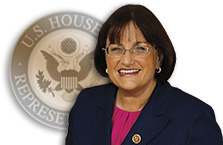In the News
Lawrence Eagle-Tribune: Delegates to EPA: Connect all Atkinson homesDelegates to EPA: Connect all Atkinson homes
Atkinson,
December 17, 2013
|
Alex Lippa
Some heavy hitters are stepping up to the plate to help homeowners with contaminated wells. U.S. Sens. Jeanne Shaheen, D-N.H., and Kelly Ayotte, R-N.H., and Congresswoman Annie Kuster, D-N.H., yesterday asked the Environmental Protection Agency to supply water to all 47 homes with contaminated wells.
ATKINSON — Some heavy hitters are stepping up to the plate to help homeowners with contaminated wells. U.S. Sens. Jeanne Shaheen, D-N.H., and Kelly Ayotte, R-N.H., and Congresswoman Annie Kuster, D-N.H., yesterday asked the Environmental Protection Agency to supply water to all 47 homes with contaminated wells. The lawmakers asked EPA administrator Gina McCarthy to expand the deal to supply 18 homes with water and include the remaining 29 homes — on the government’s tab. “Given the importance of providing reliable access to safe drinking water, we request that all homes showing contamination be connected to the new water main,” the letter reads. For more than a year, dozens of homes on Emery Drive, Belknap Drive, Brookside Terrace and Deer Run Road have had traces of 1,4 Dioxane in their wells. Dioxane is a chemical which is known to cause cancer. “No New Hampshire family should be without reliable access to safe drinking water,” Shaheen said yesterday. “Connecting all Atkinson homes that have shown contamination to the public water main is the best way to make sure people can have safe, clean drinking water.” The source of the contamination may have been the release of a chlorinated solvent at the Johnston and Johnston property in 1989. The company, which manufactured rolled aluminum, sold the property at 128 Route 111 to Winfield Alloy, a recycling company, in 2005. The contamination was discovered in 2012. Since then, the state Department of Environmental Services has provided bottled water to homes with well water containing 3 micrograms of Dioxane. In May, the EPA announced it would spend $2 million on the project. But last month they announced that money would only cover 18 homes with wells containing at least three parts per billion of 1,4 Dioxane. But the lawmakers want the rest of the homes covered, too. “We are particularly concerned that when pumping stresses on the aquifer are removed by connecting the homes currently testing over three parts per billion to the new water line, that the homes below this standard are more likely to see increased contamination in their wells,” the letter reads. John Widman lives at 8 Emery Drive. Both of his next door neighbors will be getting hooked up. But his well did not show enough contamination. “Any help I can get from the congressional delegations to get my house hooked up, I would totally be in favor of,” Widman said yesterday. “My well could go bad two weeks after they hook everyone else’s up.” Widman said he was planning to pay to be hooked up, but would welcome assistance from the government. “The risk of mine going over is still pretty high,” he said. “I would be appreciative of any help that I can get.” Ayotte said she was worried about the effect that not connecting these houses would have long-term. “Atkinson residents are rightly concerned about dangerous levels of Dioxane in their drinking water,” she said. “As a precaution, the EPA should allow all potentially affected residents to access the new water main to ensure that their drinking water is safe.” Kuster said she hoped the EPA would reconsider. “I’m pleased the EPA has been working to address the contamination issues in Atkinson, and I urge them to act swiftly to ensure all families impacted are connected with the clean, safe water they need,” she said. “It’s critical that households in Atkinson and across New Hampshire have reliable access to safe drinking water.” The delegates also focused on Deer Run Road, where six of the nine homes have traces of the contaminants. Construction of a water main is not planned to go past those homes. “These residents will have no viable option to obtain a safe, clean source of drinking water,” the letter reads. EPA spokesman David Deegan said the agency did not have a response to the letter yesterday. |
